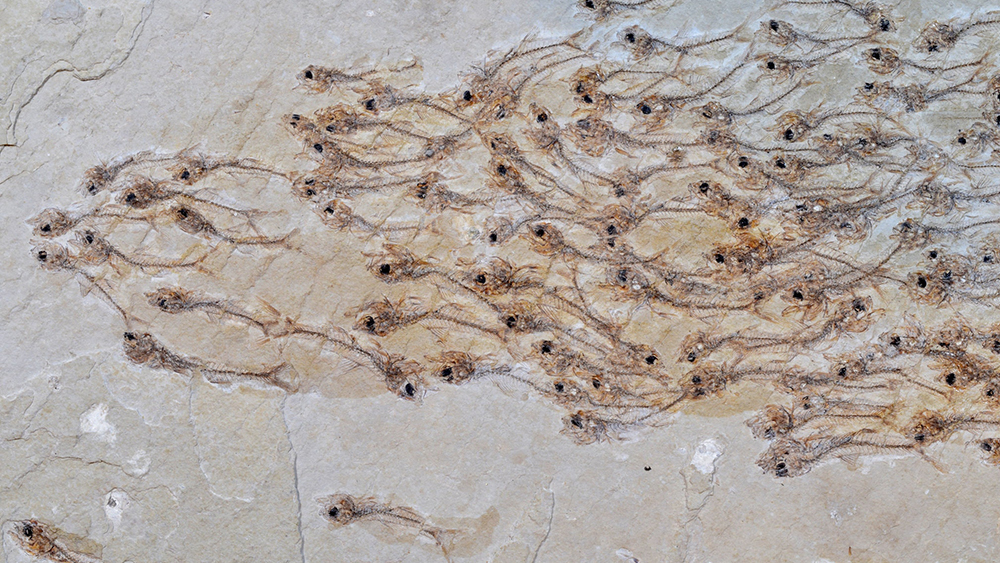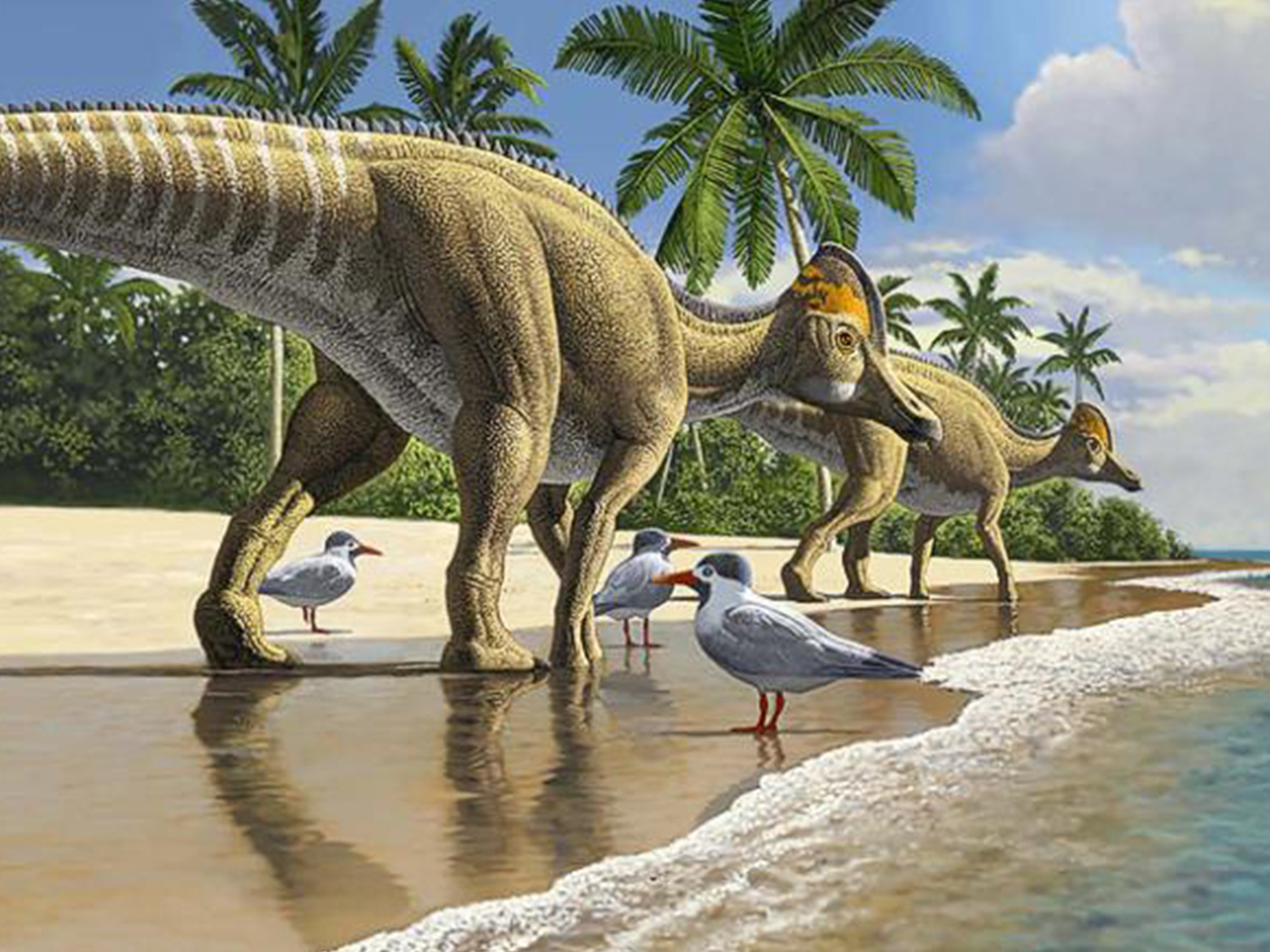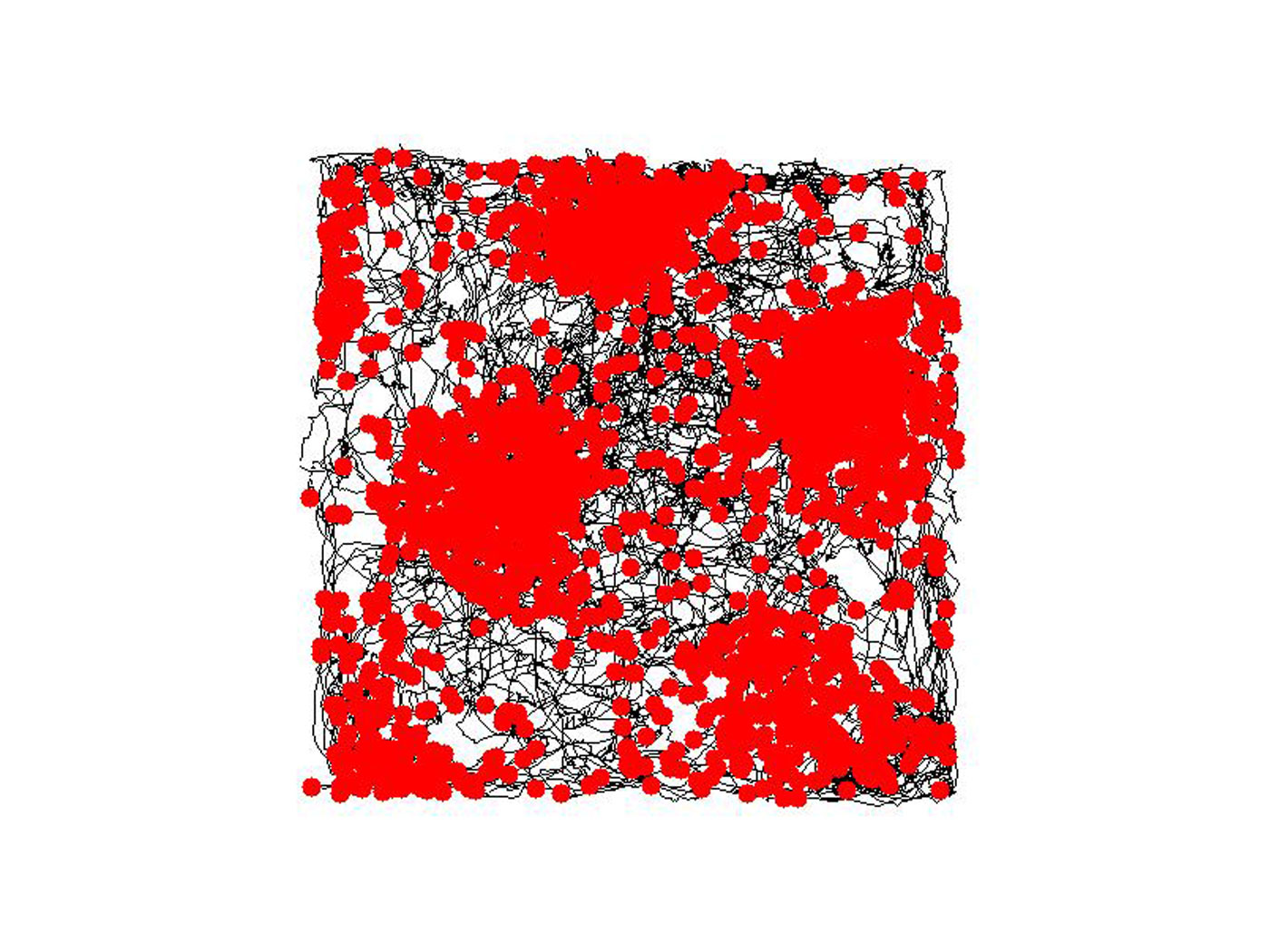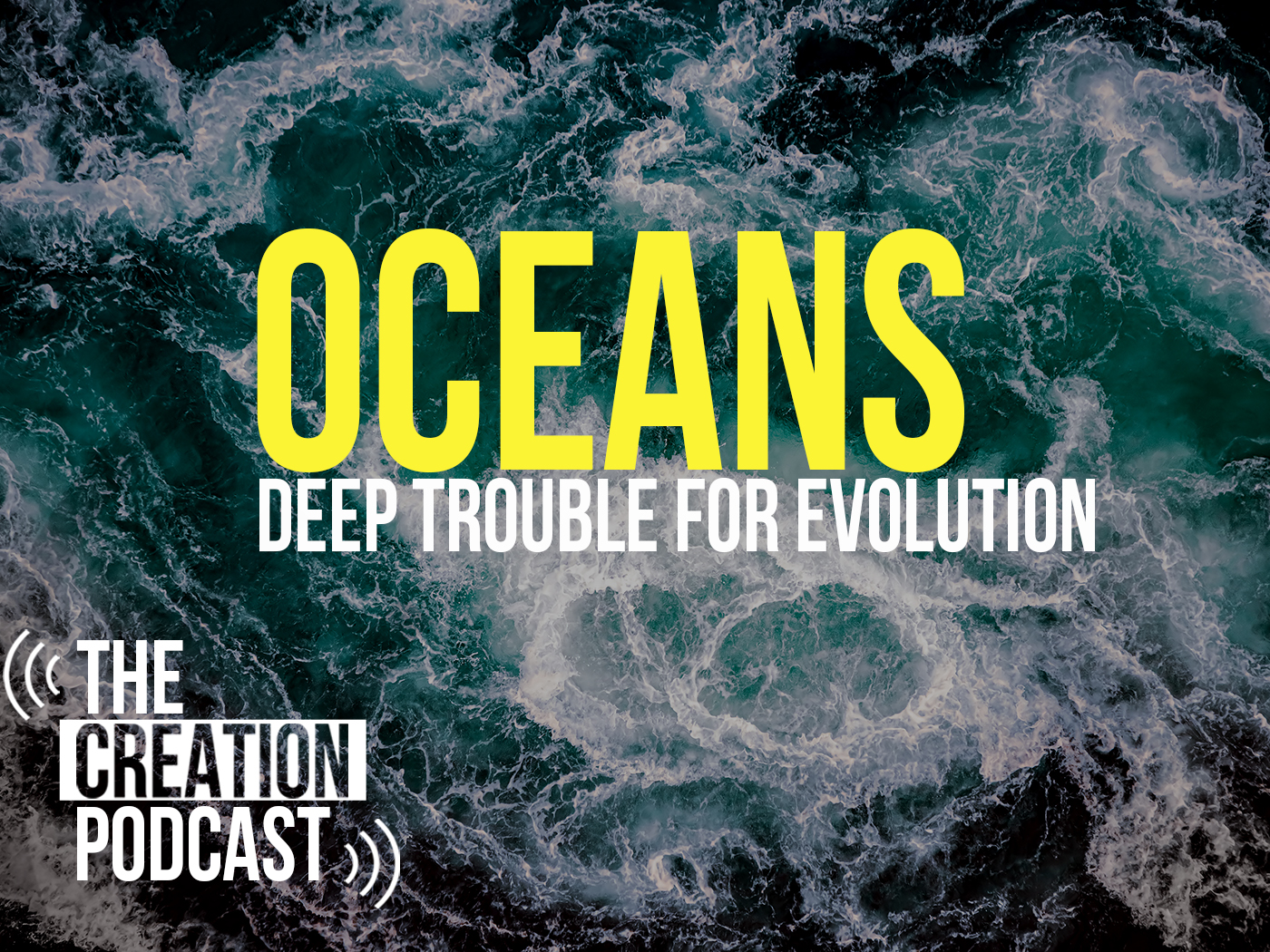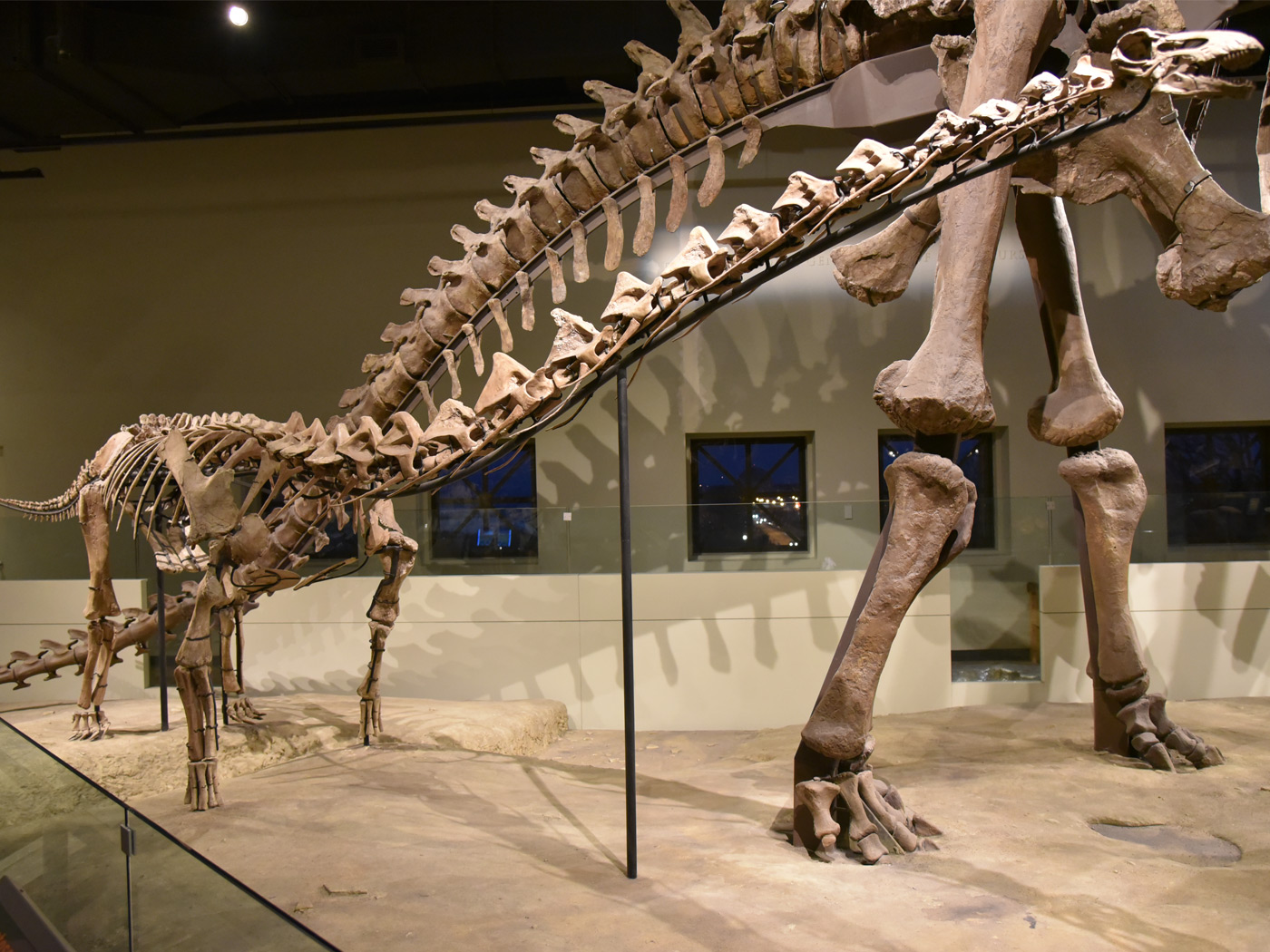“I can’t picture a three-dimensional school of fish sinking to the bottom and maintaining all their relative positions,” said Dr. Plotnick, paleontologist at the University of Illinois at Chicago. “That makes no sense to me.”1
Dr. Plotnick was talking about a recent fascinating discovery of a fossilized school of extinct fish (an entire school—259 of them) discovered in Fukui Prefectural Dinosaur Museum in Katsuyama, a small city in Japan.
From the look of the fossil slab (22 by 15 inches), the school of fish was covered in seconds by a catastrophic event...like a flood. Plotnick makes a valid point. How can you have a school of fish somehow sink to the bottom and be slowly buried by sediments, all while facing the same direction? There’s no indication of predation, scavenging, or bacterial decay one would expect to find if these fish were slowly and gradually buried.
Evolutionists want to distance themselves from such an obvious catastrophic interpretation and instead state, “It remains unclear how the fish shoal’s [school] structure was preserved,”2 and “Other scientists say more proof is required to show that the fish became buried within the space of a few seconds.”1 It appears they want the explanation to be anything but a flood!
Creationists maintain fish were created on Day 5 of creation week. ![]()
Creationists maintain fish were created on Day 5 of creation week. “Fish had the know-how to form schools much earlier than previously known”1 and vast numbers were killed in the Genesis Flood about 4,500 years ago.
In the past 35+ years evolutionists have grudgingly come to the conclusion that this planet experienced a world-wide catastrophe, not from a flood, but they claim a massive asteroid struck the current Yucatan Peninsula 66 million years ago. This is known as the K-T extinction, or Cretaceous–Paleogene (K–Pg), extinction event. They suggest this is what caused the extinction of around three-quarters of life on Earth—and all the dinosaurs.
In April 2019, it was reported that a North Dakota fossil graveyard challenges the slow and gradual demise-of-dinosaurs argument by evolutionists, but they still accept the asteroid strike as the primary event.
This school of fish is quite an assemblage of organisms—and they all died at the same time, on the same day? A rapid and catastrophic burial on a massive scale in the space of what appears to be a few seconds in this case is what creationists expect based on the Genesis Flood.
And speaking of rapid burial in just a day, paleontologists in Argentina found a major Jurassic-era fossil site spanning a whopping 23,000 square miles.
Once again, when one is confronted with such a wide area of fossil deposit—and that the fossils were preserved “in less than a day in some cases”—this necessarily implies rapid burial on a large scale. Perhaps a continental-wide flood?
References
1. Joel, L. 2019. A School of Fish, Captured in a Fossil. The New York Times. Posted on nytimes.com on May 29, 2019, accessed on June 3, 2019.
2. Mizumoto, N. et al. 2019. Inferring collective behaviour from a fossilized fish shoal. Proceeding of the Royal Society B. Posted on royalsocietypublishing.org on May 29, 2019, accessed June 3, 2019.
3. Swanston, B. 2019. Why North Dakota’s Prehistoric Graveyard is Raising Eyebrows. Sciencing.com. Posted on sciencing.com on April 8, 2019, accessed June 3, 2019.
4. Scientists discover major Jurassic fossil site in Argentina. Phys.org. Posted on phys.org on February 28, 2016, accessed June 6, 2019.
*Mr. Sherwin is Research Associate at ICR. He has a master’s in zoology from the University of Northern Colorado.




